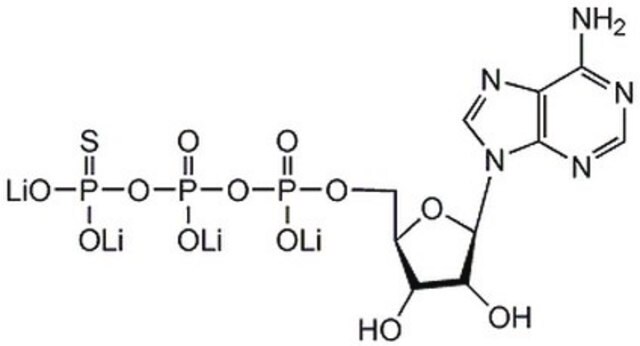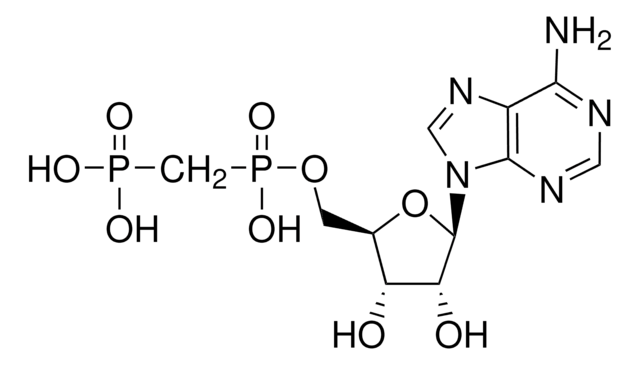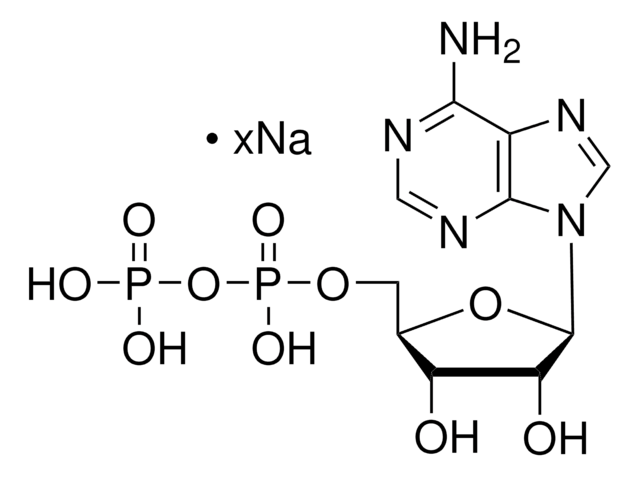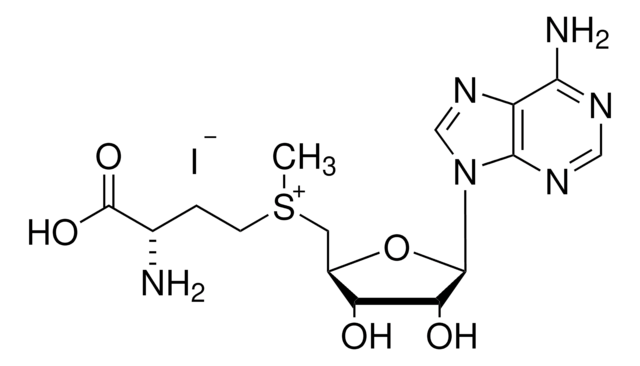119120
Adenosine 5′-O-(3-Thiotriphosphate), Tetralithium Salt
A relatively stable, slowly hydrolyzable ATP analog that can substitute for ATP in various kinase reactions. Used as a substrate and as an inhibitor of ATP-dependent enzyme systems.
Sinónimos:
Adenosine 5′-O-(3-Thiotriphosphate), Tetralithium Salt, ATP-γ-S, 4Li
About This Item
Productos recomendados
Quality Level
assay
≥85% (HPLC)
form
solid
manufacturer/tradename
Calbiochem®
storage condition
OK to freeze
desiccated (hygroscopic)
impurities
<10% ADP
color
white
solubility
water: 10 mg/mL
shipped in
wet ice
storage temp.
−20°C
SMILES string
[Li+].[Li+].[Li+].[Li+].[P](=O)([S-])([O-])O[P](=O)([O-])O[P](=O)([O-])OC[C@H]1O[C@H]([C@@H]([C@@H]1O)O)[n]2c3ncnc(c3nc2)N
InChI
1S/C10H16N5O12P3S.4Li/c11-8-5-9(13-2-12-8)15(3-14-5)10-7(17)6(16)4(25-10)1-24-28(18,19)26-29(20,21)27-30(22,23)31;;;;/h2-4,6-7,10,16-17H,1H2,(H,18,19)(H,20,21)(H2,11,12,13)(H2,22,23,31);;;;/q;4*+1/p-4/t4-,6-,7-,10-;;;;/m1..../s1
InChI key
DWQFDOIBOYDYKH-KWIZKVQNSA-J
General description
Application
- Involvement of purinergic receptors and NOD-like receptor-family protein 3-inflammasome pathway in the adenosine triphosphate-induced cytokine release from macrophages.: This study explores the role of purinergic receptors and the NOD-like receptor-family protein 3 (NLRP3) inflammasome pathway in cytokine release induced by adenosine triphosphate (ATP) in macrophages. The findings suggest potential therapeutic targets for inflammatory diseases (Gicquel et al., 2014).
- Extracellular ATP facilitates flow-induced vasodilatation in rat small mesenteric arteries.: The study demonstrates that extracellular ATP enhances flow-induced vasodilation in small mesenteric arteries in rats, indicating a significant role of ATP in vascular function and potential implications for cardiovascular therapies (Liu et al., 2004).
Warning
Reconstitution
Other Notes
Chung, S., et al. 1991. Science253, 560.
Litosch, I., and Fain, J.N. 1986. Life Sci. 39, 187.
Chrysogelos, S., et al. 1983. J. Biol. Chem.258, 12624.
Legal Information
Storage Class
11 - Combustible Solids
wgk_germany
WGK 3
flash_point_f
Not applicable
flash_point_c
Not applicable
Certificados de análisis (COA)
Busque Certificados de análisis (COA) introduciendo el número de lote del producto. Los números de lote se encuentran en la etiqueta del producto después de las palabras «Lot» o «Batch»
¿Ya tiene este producto?
Encuentre la documentación para los productos que ha comprado recientemente en la Biblioteca de documentos.
Los clientes también vieron
Nuestro equipo de científicos tiene experiencia en todas las áreas de investigación: Ciencias de la vida, Ciencia de los materiales, Síntesis química, Cromatografía, Analítica y muchas otras.
Póngase en contacto con el Servicio técnico![Adenosine 5′-[γ-thio]triphosphate tetralithium salt ≥75% (HPLC), powder](/deepweb/assets/sigmaaldrich/product/structures/319/398/e29221c2-3649-455b-bd33-583bb017ec7d/640/e29221c2-3649-455b-bd33-583bb017ec7d.png)

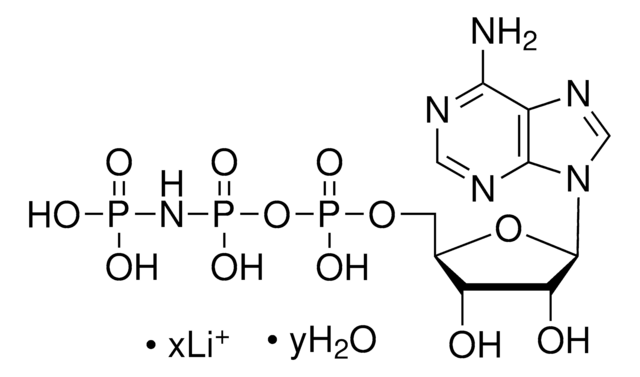
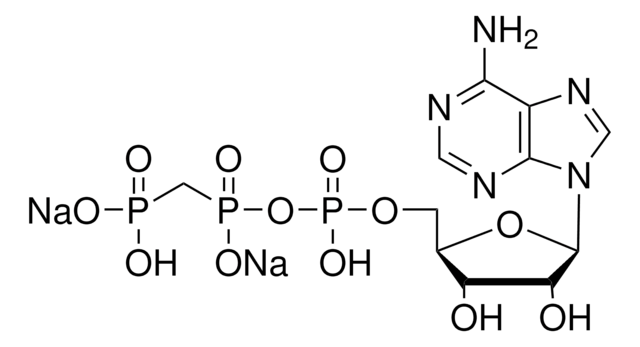
![Adenosine 5′-[β-thio]diphosphate trilithium salt ≥80% (HPLC)](/deepweb/assets/sigmaaldrich/product/structures/666/651/b097613c-0d79-4acf-9a09-a0a42234d7bd/640/b097613c-0d79-4acf-9a09-a0a42234d7bd.png)
